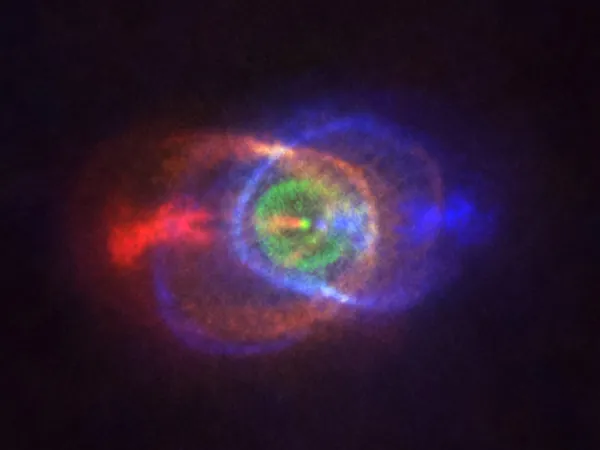
Revolutionary Discovery: First White Dwarf-Main Sequence Binaries Uncovered in Star Clusters!
2024-11-19
Author: Daniel
Revolutionary Discovery: First White Dwarf-Main Sequence Binaries Uncovered in Star Clusters!
In an astonishing breakthrough, astronomers from the University of Toronto (U of T) have uncovered the first known pairs of white dwarf and main sequence stars—essentially "dead" remnants and "living" stars—located in young star clusters. This pivotal study, recently published in The Astrophysical Journal, promises to unlock secrets surrounding one of the most perplexing chapters of stellar evolution.
These findings are set to significantly enhance our understanding of binary star systems, which are pairings of stars orbiting each other. This research will bridge the intricate lifecycle from the birth of stars to their ultimate demise, shedding light on how celestial bodies form, how galaxies evolve, and even how most elements on the periodic table came into existence. Furthermore, this groundbreaking discovery could provide explanations for cosmic phenomena like supernova explosions and gravitational waves, as such events often originate from binary systems containing these compact stellar remnants.
Did you know that nearly half of all stars similar to our Sun exist in binary systems? While one star is typically larger and more massive than the other, astronomical assumptions about their evolutionary timelines have often turned out to be incorrect. The larger star exhausts its nuclear fuel and evolves more rapidly, entering the red giant phase where it dramatically expands—sometimes even consuming its smaller companion in a phase known as the common envelope.
This common envelope phase has been one of the most puzzling aspects of astrophysics. The U of T researchers aim to elucidate how this interaction affects the stars' subsequent evolutionary paths. Their investigation into these post-common envelope systems—where a white dwarf coexists with a main sequence star—opens a unique window into this extreme phase of stellar evolution, allowing for unprecedented study of binary systems.
“Our findings signal a crucial first step in tracing the lifecycle of binary stars,” said lead researcher Steffani Grondin, emphasizing the significance of this observational sample in mapping stellar evolution’s least understood phases.
To arrive at these results, the team utilized advanced machine learning techniques to analyze data from multiple prestigious sources, including the European Space Agency's Gaia mission, which has meticulously cataloged over a billion stars. Other data was drawn from the well-known 2MASS and Pan-STARRS1 surveys, creating a robust platform for searching and confirming new binary star systems.
Before this research, astronomers had only confirmed two candidates fitting this profile in star clusters. The current study has the potential to boost that number to a staggering 52 binaries across 38 clusters. Such findings are monumental because they allow astronomers to assess the age of these stars, linking them back to the conditions established during the common envelope phase.
Collaborator Joshua Speagle, a professor at U of T, noted that machine learning significantly streamlined the identification process of these systems, making the otherwise daunting task of cross-referencing data manageable and efficient.
"This discovery highlights how much of our universe is essentially hiding in plain sight, just waiting to be unearthed," remarked co-author Maria Drout, underscoring the potential implications this research has for various fields within astrophysics.
The quest to understand the cosmos continues to unfold, and as we delve deeper into the mysteries of stellar evolution, who knows what other astonishing secrets await discovery? Keep your telescopes trained on the stars; the universe has much more to reveal!

 Brasil (PT)
Brasil (PT)
 Canada (EN)
Canada (EN)
 Chile (ES)
Chile (ES)
 España (ES)
España (ES)
 France (FR)
France (FR)
 Hong Kong (EN)
Hong Kong (EN)
 Italia (IT)
Italia (IT)
 日本 (JA)
日本 (JA)
 Magyarország (HU)
Magyarország (HU)
 Norge (NO)
Norge (NO)
 Polska (PL)
Polska (PL)
 Schweiz (DE)
Schweiz (DE)
 Singapore (EN)
Singapore (EN)
 Sverige (SV)
Sverige (SV)
 Suomi (FI)
Suomi (FI)
 Türkiye (TR)
Türkiye (TR)